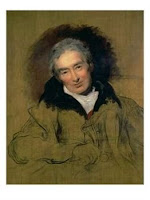Yesterday the RITA and Golden Heart finalists were notified so it was a day of joy for many who received “the call” themselves or whose friends excitedly made their announcements.
The RITA and Golden Heart are Romance Writers of America’s highest awards for excellence in the romance genre. The RITA is for books published in 2006 and the Golden Heart is for unpublished manuscripts from aspiring romance writers. The winners of the awards are announced in July at a glitzy ceremony at the annual Romance Writers of America annual conference. I am so lucky to have experienced this excitement at its absolute fullest – winning the Golden Heart in 2003 and the RITA in 2006, so I know exactly how wonderful this recognition can be.
There was no RITA category for Best Regency this year, but Regency era romance did very well anyway! In the Long and Short Historical categories, I am figuring all but two were set in the Regency era, and one of those was set in 1750, pretty close.
 Very special congratulations to Pam Rosenthal, one of our frequent visitors to Risky Regencies. Pam’s The Slightest Provocation is a RITA finalist for Best Long Historical. Hooray, Pam!!!
Very special congratulations to Pam Rosenthal, one of our frequent visitors to Risky Regencies. Pam’s The Slightest Provocation is a RITA finalist for Best Long Historical. Hooray, Pam!!!

Another pal of mine, Tracy Anne Warren is a Long Historical finalist, as well, for The Husband Trap. The Husband Trap is also up for a RITA for Best First Book. What a thrill for Tracy!
 Mary Jo Putney is also a finalist for Best Long Historical for The Marriage Spell. Mary Jo was one of the first published authors I met when I started writing and she has always been very encouraging and helpful to me.
Mary Jo Putney is also a finalist for Best Long Historical for The Marriage Spell. Mary Jo was one of the first published authors I met when I started writing and she has always been very encouraging and helpful to me.

Julia Quinn is there in Long Historical, too, for On the Way to the Wedding. I had the pleasure of sitting next to Julia at an RWA booksigning. She has hoards of very loyal fans, let me tell you!

Eloisa James’ Taming the Duke is a finalist in the Best Short Historical category. Eloisa is another author who has always been friendly and nice to me, ever since I met her years ago at the RWA conference when her first book created such a splash.
Here are the Historical finalists for the RITA:
Long Historical
Surrender by Pamela Clare
Lady of Sin by Madeline Hunter
The Marriage Spell by Mary Jo Putney
On the Way to the Wedding by Julia Quinn
The Slightest Provocation by Pam Rosenthal
The Husband Trap by Tracy Anne Warren
Short Historical
The Barefoot Princess by Christina Dodd
She’s No Princess by Laura Lee Guhrke
A Duke of Her Own by Lorraine Heath
The Taming of the Duke by Eloisa James
Devil In Winter by Lisa Kleypas
Scandal In Spring by Lisa Kleypas
The Book of True Desires by Betina Krahn
The Devil’s Waltz by Anne Stuart
You can’t receive a higher romance award than the RITAs, in my opinion, but the Golden Heart contest is special in its own right. When you are trying so hard to break into publishing, there are few high spots. Mostly you endure a series of rejections until that magic moment when “the Call” comes that an editor wants to buy your book. Finaling in the Golden Heart is a huge boost. It doesn’t always lead to a sale, like it did for me, but it helps you get closer and it lets you know you do write excellent stories!
In 2003 when I was a Golden Heart finalist a yahoo loop was started for all the finalists as it is every year. But in 2003, the group just bonded in a special way and remain a strong support for each other even now, four years later. We named ourselves The Wet Noodle Posse. The Wet Noodle Posse made a great showing in the announcements yesterday!
Terry McLaughlin’s Make Believe Cowboy is a RITA finalist for Best Long Contemporary.
Stephanie Rowe’s Date Me Baby One More Time is a RITA finalist in Best Paranormal.
Mary Fechter’s Beneath the Surface is a Golden Heart finalist for Best Contemporary Single Title Romance.
Ramona Thompson’s Accidental Truth is a Golden Heart finalist for Best Inspirational.
Theresa Ragan’s Return of the Rose is a Golden Heart finalist for Best Paranormal
Trish Milburn’s Coven and her The Wishing Tree are Golden Heart finalists for Best Young Adult Romance.
What a happy happy day!! Congratulations to all the finalists and may you enjoy well-deserved recognition of fine work!
Diane won the 2003 Golden Heart for the manuscript that became The Mysterious Miss M and the 2006 RITA for Best Regency for A Reputable Rake.








